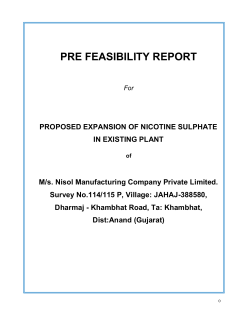
Quiz 9.3B AP Statistics Name:
Quiz 9.3B AP Statistics Name: 1. Sweet corn of a certain variety is known to produce individual ears of corn with a mean weight of 8 ounces. A farmer is testing a new fertilizer designed to produce larger ears of corn, as measured by their weight. He finds that 28 randomly-selected ears of corn grown with this fertilizer have a mean weight of 8.25 ounces and a standard deviation of 0.8 ounces. There are no outliers in the data. (a) Do these samples provide convincing evidence at the = 0.05 level that the fertilizer had a positive impact on the weight of the corn ears? Justify your answer. (b) How would your conclusion change if your sample mean had been 8.26 ounces? What point does this make about statistical significance? © 2011 BFW Publishers The Practice of Statistics, 4/e- Chapter 9 427 2. Low-density lipoproteins (LDL) are a form of cholesterol in blood that has been linked to atherosclerosis, a condition of the arteries that often leads to heart attacks. Levels of LDL below 100 mg per deciliter (mg/dL) of blood are considered healthy; levels above 160 mg/dL are considered high. A pharmaceutical company tested a new drug aimed at reducing blood levels of LDL by conducting a large-scale completely-randomized experiment on 1000 individuals with LDL levels above 160 mg/dL. Subjects were randomly assigned to one of two groups: one group received the new drug and the other received the drug that is the current standard. The researchers found a statistically significant reduction of 0.6 mg/dL in the LDL levels of those in the new drug group versus those in the current drug group. (a) In the context of this study, what does “statistically significant” mean? (b) Does this mean the new drug is an important advance in therapy? Explain. 3. The developer of a new filter for filter-tipped cigarettes claims that it leaves less nicotine in the smoke than does the current filter. Because cigarette brands differ in a number of ways, he tests each filter on one cigarette of each of nine brands and records the difference in nicotine content. His results are given in the table below. Brand A B C D E F G H J Old Filter nicotine, mg 0.7 0.8 0.8 0.9 0.9 1.0 1.2 1.2 1.8 New Filter nicotine, mg 0.6 0.6 0.7 0.8 0.7 1.0 0.8 0.9 1.5 Do the differences in the paired data adequately meet the Normality condition for a tprocedure? Justify your answer. 428 The Practice of Statistics, 4/e- Chapter 9 © 2011 BFW Publishers
© Copyright 2025





















